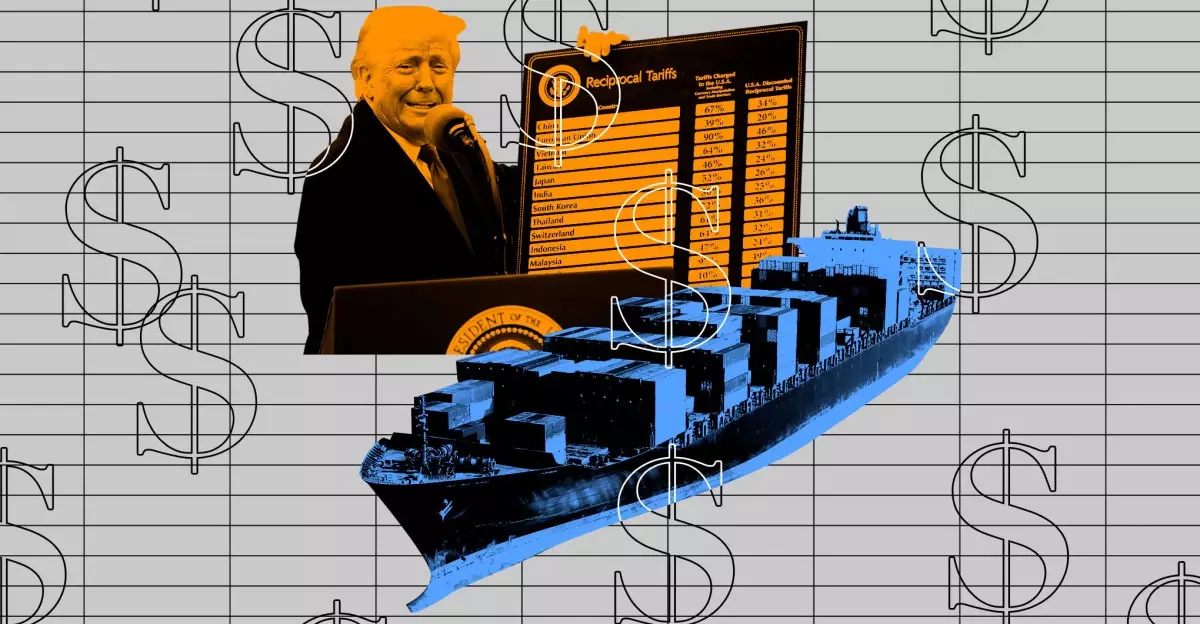In a significant recent update, the U.S. Customs and Border Protection (CBP) has revised its stance regarding the imposition of tariffs on popular consumer technology imports, specifically excluding certain devices from the heavy tariffs levied under previous administrations. This decision can be viewed as a double-edged sword; while it provides immediate relief to consumers and tech companies, it also signals ongoing complexities in trade relationships, particularly with China. Amidst the turbulence of trade wars and regulatory frameworks, these exemptions reflect an urgent attempt to stabilize the market and mitigate the potential financial burden on tech consumers in America.
The move, primarily associated with the updated tariff policies initiated under the Trump administration, particularly targets essential consumer electronics such as smartphones, laptops, and various computing components. While these popular items are deemed exempt from the newly imposed tariffs, it is crucial to note that they are not entirely free from the financial implications of pre-existing tariffs and duties applicable to goods entering the United States. This exposition of tariffs showcases the intricate interplay of international commerce, wherein a simple smartphone can become a focal point of diplomatic tensions.
The Regulatory Landscape and Its Implications on Tariffs
The latest adjustments to tariff policies, particularly regarding consumer technology imports from China, appear to be a strategic move aimed at easing rising tensions between the U.S. and China over trade. By waiving the additional 125% tariffs on crucial electronics and components, the CBP aims to support American manufacturers and consumers who heavily rely on these imports. This is a move toward progress for both technology enthusiasts and businesses that had long grappled with escalating costs due to the ongoing trade warfare.
However, the fabric of this new policy is woven with threads of complexity. While certain products are exempt from increased tariffs, they remain susceptible to earlier imposed duties, some aimed at pressuring China in various geopolitical arenas. For instance, tariffs aimed at curbing the shipment of precursor chemicals for fentanyl production continue to apply—a clear indication that trade and regulatory policies remain entangled within broader sociopolitical objectives. Hence, consumers should remain vigilant about potential indirect impacts on pricing and availability of technology products.
Consumer Reactions and Market Dynamics
Tech enthusiasts and consumers have welcomed this news with cautious optimism. The past few months have seen prices of gaming consoles, smartphones, and other electronics steadily climb as manufacturers passed the cost onto consumers. The new exemption could help stabilize prices, providing a temporary reprieve for those eager to upgrade their devices without the fear of exorbitant price hikes. Companies like Sony and Nintendo, for example, may find renewed confidence in releasing products at competitive prices, thereby encouraging consumer spending in an otherwise shaky market.
However, the ramifications extend beyond just pricing; this could also generate a shift in consumer behavior. Tech companies may feel encouraged to invest more heavily in the U.S. market, possibly bolstering North American tech innovation and production capabilities. This was evident as Apple preemptively imported a substantial number of iPhones from India before the tariffs took hold—a strategic maneuver showcasing agility and foresight in navigating changing landscapes.
Furthermore, the hesitance of major tech firms to raise prices despite underlying costs indicates an emergent dynamic marked by strategizing and adaptability. Upcoming products like the rumored Switch 2 from Nintendo are expected to maintain their price points, highlighting an industry-wide commitment to delivering value amidst uncertain economic conditions.
Looking Ahead: The Future of U.S.–China Tech Relations
The evolving regulatory landscape presents a tantalizing opportunity for consumers and tech companies alike, yet it also beckons the question: what does the future hold for U.S.–China relations in the tech sector? While current exemptions stand to benefit both sides in the short term, ongoing negotiations surrounding tariffs will undoubtedly continue to shape market conditions and pricing strategies moving forward. As we dive deeper into this digital era, staying informed about these changes is crucial—not just for consumers keen on the latest gadgets, but also for industries shaping the future of technology.
The ongoing dance between diplomacy and trade continues to be a hallmark of the global marketplace, with implications reaching far beyond mere price tags on consumer electronics. With each policy shift, the interplay of global strategies, economic interests, and consumer needs will unfold, further defining the landscape of international trade.


Leave a Reply
You must be logged in to post a comment.